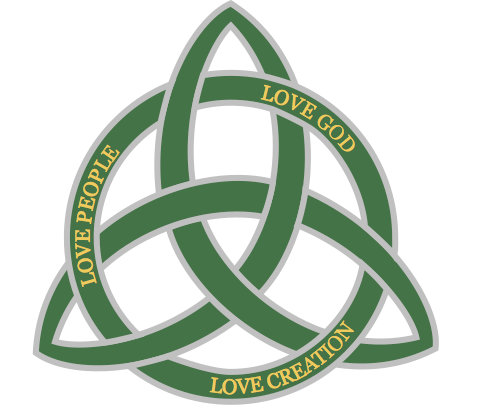Journey: Inspiration
The Tree of Life, New Orleans, LA
By Andrea Lingle
My pilgrimage mantra is a breath prayer. As I breathe in, I chant, "I am here," and, as I breathe out, I chant, "Here I am." Inspired by Isaiah 6, it is a reminder to cling to presence, and a commitment to participation. I often breathe through this prayer as I walk the road to Iona Abbey or over the pastures to the North Shore of Iona. Pilgrimage is wrapped up in movement. It implies that the pilgrim comes to the practice of pilgrimage with the expectation they they will not remain in the same place. Pilgrimage is an unfolding, a discovery—it is a refusal of stasis.
There are two main phases involved in breathing. Inspiration and expiration, and, perhaps, since your lungs had to inflate via inspiration in your first moments outside of the womb, inspiration is considered the first step. Inspiration is a byproduct of the downward motion of the diaphragm (a muscle that spans the abdomen beneath the lungs). As the diaphragm moves downward, it creates a larger space for the lungs to occupy, and, because the lungs are elastic, if the have access to air, they obligingly fill up the empty space.
Simone Weil, in her essay, "Reflections on the good use of school studies with a view to the love of God," speaks about negative attention being that which is the nature of prayer. Her use of the word negative is analogous to the action of the lungs during inspiration. They are doing work. Without exception, they are doing the most important work of anyone's life. Fasting from air takes thirty seconds to get your full attention. Two minutes is excruciating for most people, and ten minutes is deadly. but inspiration is negative work. It is simply making space, which certainly takes muscular contraction, and trusting that negative air pressure will do the work of filling your lungs. It is not just emptiness. It is invitational evacuation.
Pilgrimage is a five step process: preparation, journey, arrival, return, and re-entry. While sometimes pilgrimage has a destination: the Santiago de Compostela Cathedral, the Masjid al-Haram, the Bodh Gaya, frequently pilgrimage is more mundane. Just a commitment to stay open to the Way for a period of time. This is the journey of inspiration—the journey of spaciousness. Like the diaphragm flexing deep into the abdominal cavity, pressing the liver and the stomach against the intestines and kidneys, the journey of pilgrimage involves a willingness to allow the self to recede to make space for the procession of the Spirit.
The beauty of the dual meaning of the word inspiration is that, while the self recedes to create the negative space into which the Spirit flows, this process enlivens the self. Grace, the flow of creative love, is given a riverbed in which to flow. As I walk the pilgrim way, my inspiratory prayer, "Here I am," is paired with the depression and correlative opening, of my core, and that which fills my lungs and prayer is effective for life.
The Practice:
For thought:
What is filling my soul?
What steps would I need to make space in my soul?
Who would I need to partner with?
For doing:
Find your pulse
Breath in for four beats of your heart
Hold your breath for four beats
Breathe out for four beats
Hold your breath for four beats
Repeat for 3-5 minutes
For reflection:
Pay attention to the breath holds. Which hold feels more urgent, the inspiratory or expiratory hold?

